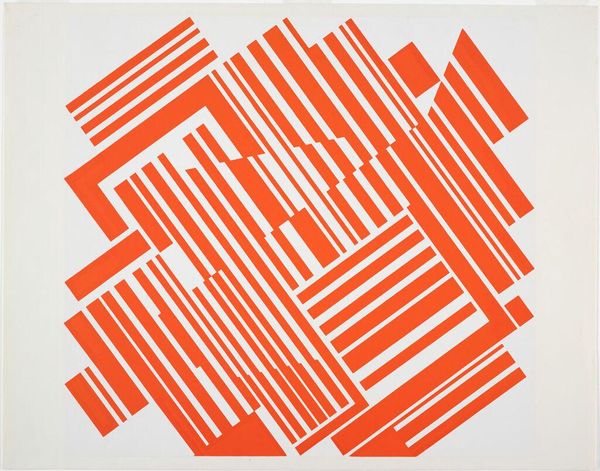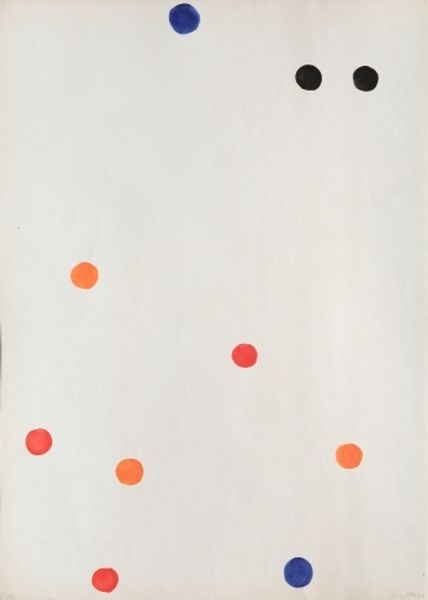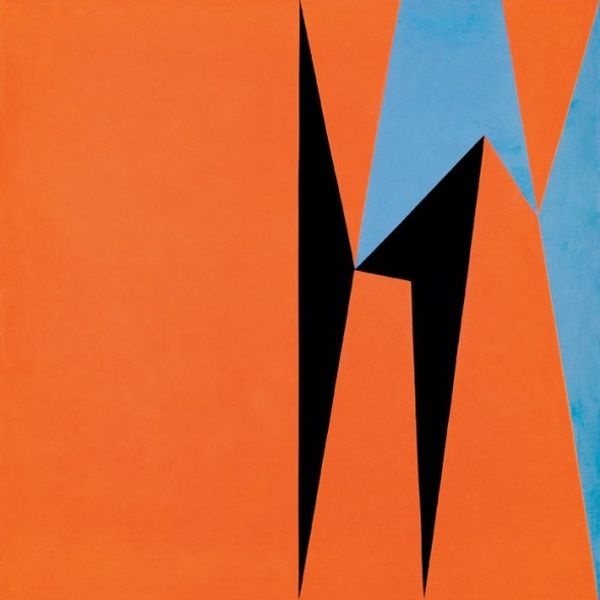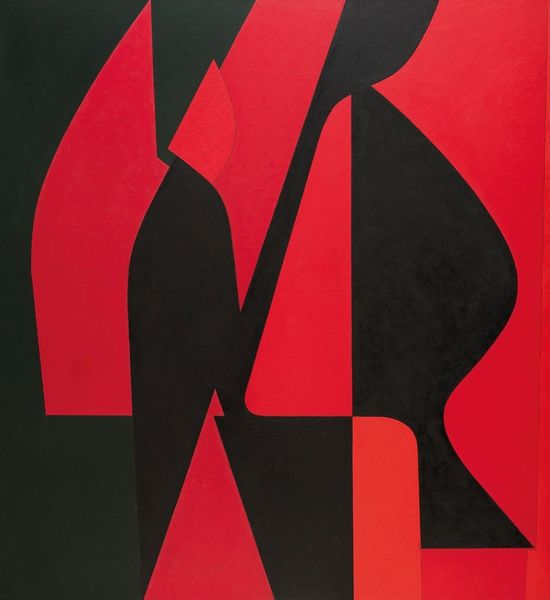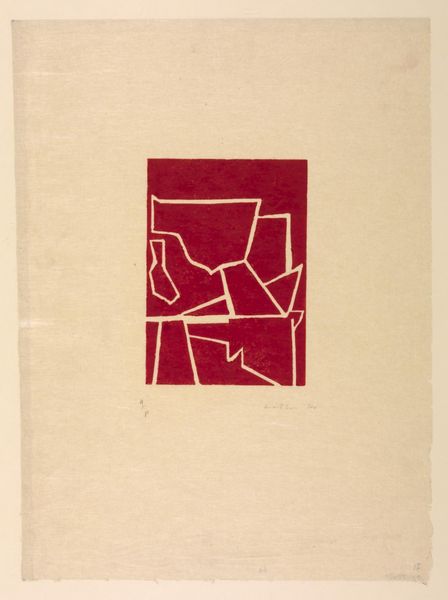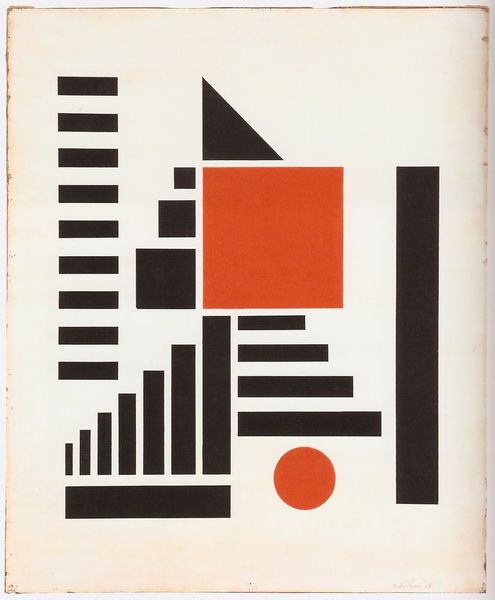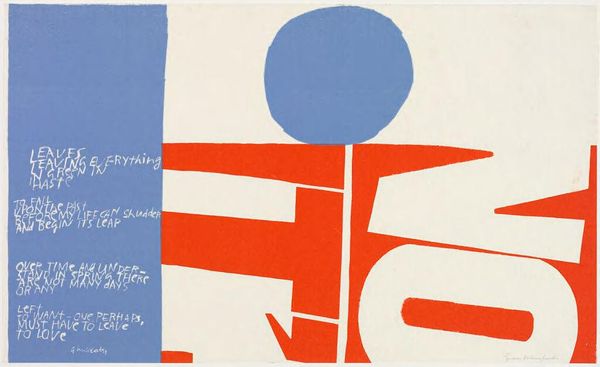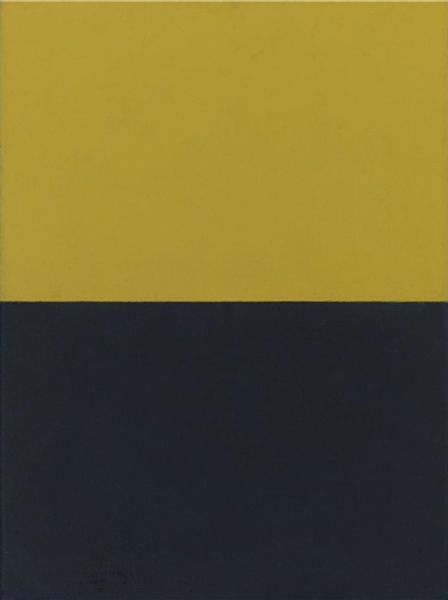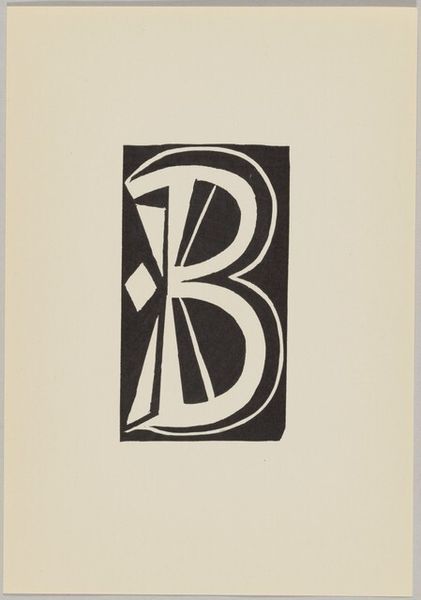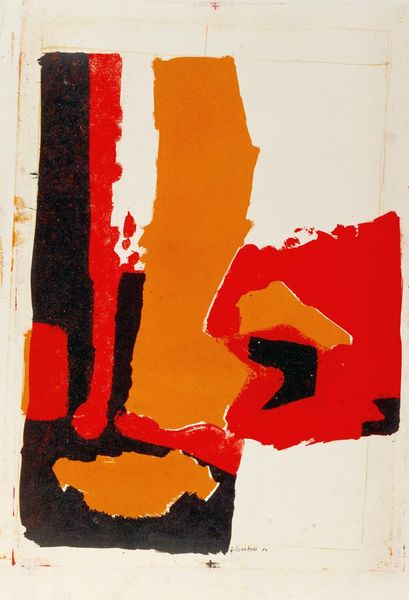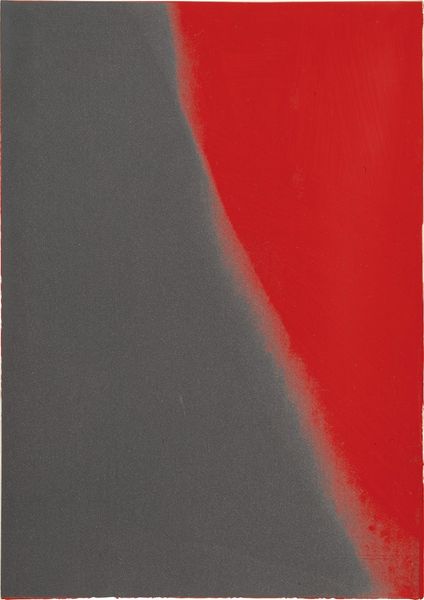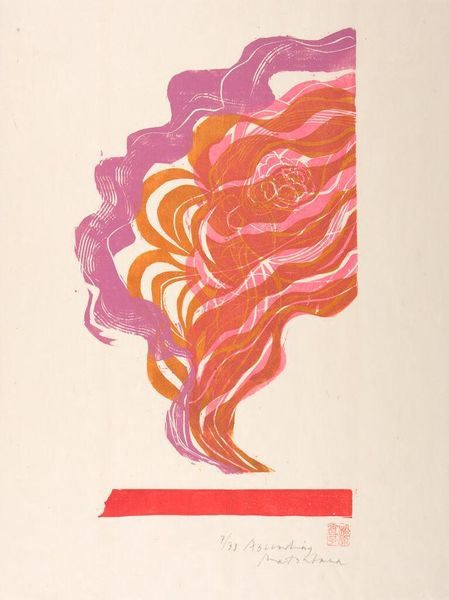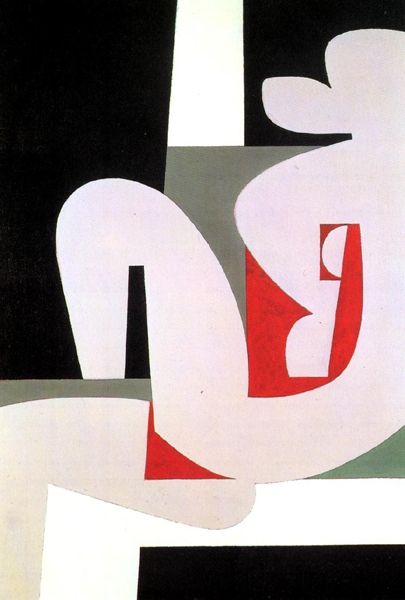
typography
#
conceptual-art
#
neo-concrete
#
op art
#
typography
#
typography
#
pop-art
#
line
Copyright: Helio Oiticica,Fair Use
Editor: Helio Oiticica's piece, "Mangue Bangue" immediately grabs my attention with its bold, orange background and scattered white lettering. It almost feels like a sign or poster, but the letters don’t quite spell anything coherent to me. What do you make of this intriguing piece? Curator: This is less about immediately discernible meaning and more about cultural context. Helio Oiticica was deeply engaged with the Brazilian avant-garde, specifically within the Tropicália movement of the 1960s. “Mangue Bangue” uses the visual language of advertising, which in a moment of great political upheaval suggests an ironic stance on popular culture. Does the visual arrangement remind you of any graphic design trends? Editor: I see it – the almost chaotic arrangement of the letters reminds me of pop art aesthetics, particularly the blurring of high and low culture! It is like he is trying to give visibility to urban popular culture. Curator: Exactly! Now consider that the materials themselves – simple paint on, perhaps, a board or canvas – stand in contrast to the sleekness typically associated with advertising. In the 60's Oiticica wanted to create the new concept of "environmental art," breaking with any institutional concept. The political tension between those who wanted to carry out new experimental aesthetic research and those who, in the name of politics, opposed experimentation, saw in Mangue Bangue, and works similar to it, a kind of possibility of a new subversive visuality. Does this understanding change how you see the work's message? Editor: Definitely. Knowing the context makes it so much richer. It's not just random letters; it’s a deliberate commentary on the intersection of art, politics, and popular culture within a specific historical moment. Curator: Precisely! It showcases how art can reflect and challenge social structures and the public role of artistic imagery. Editor: It’s fascinating to consider how visual art, and in this case even something as simple as typography, can be so deeply interwoven with social commentary.
Comments
No comments
Be the first to comment and join the conversation on the ultimate creative platform.
